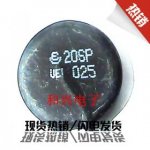OK....
Yes, it is an inrush current limiter. NTC, its resistance goes down with temperature.
The very first question is whether this is the only part in-circuit, or if there is a relay that shorts it out after the voltage comes up to a set threshold. That is very common, and makes much more sense, but may not be how the designers did it. I would use the relay, myself.....
These parts are usually rated for capacitance.... the capacitance that can be connected at a given voltage, because that is really a measure of the energy the part will absorb each time the unit has power applied. Go too low on energy capability and the part will not last.
In reality, the part is fairly non-critical, they are usually fairly loose on their resistances, etc to begin with, so a similar part should work, so long as you don't have to maintain a warranty, etc (a non-stock part would void the warranty, obviously).
At Digikey, a 14 ohm SL22 14007 is rated for 4800 uF at 120V and 1200 uF at 240V. If the part is bypassed with a relay, it will almost certainly do the job, assuming your capacitance on the bus is not more than the rating at the particular voltage, which I assume is 120V, since 220V was too much.
http://www.digikey.com/product-search/en?x=13&y=18&lang=en&site=us&keywords=SL22+14007
If the part is not bypassed by a relay, then you may need to use the exact OEM part.
Mike....
The part you linked is non-stock, with a 300 pc minimum order.............. Not too useful to the OP....






